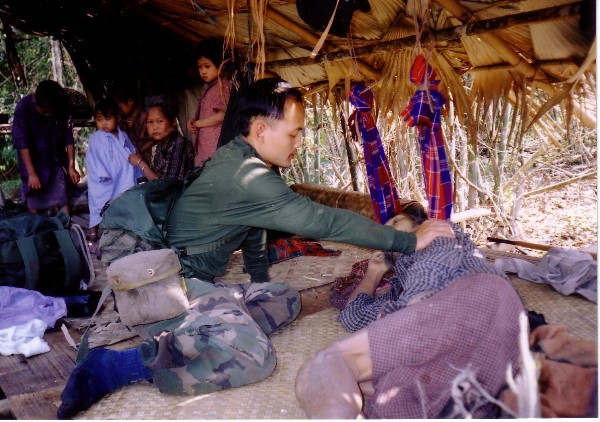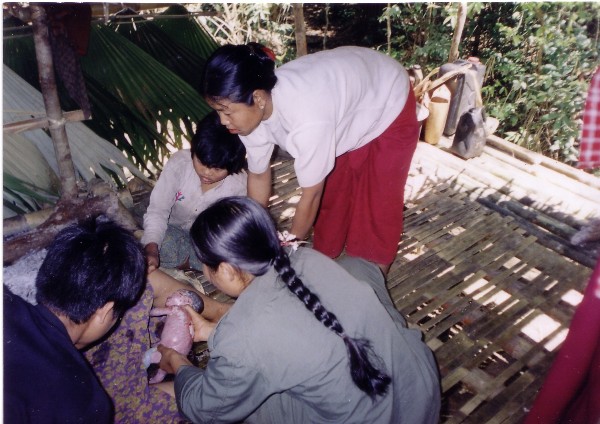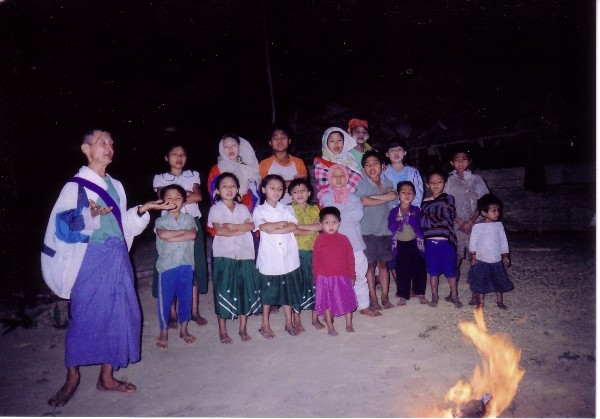March 8-29, 2004
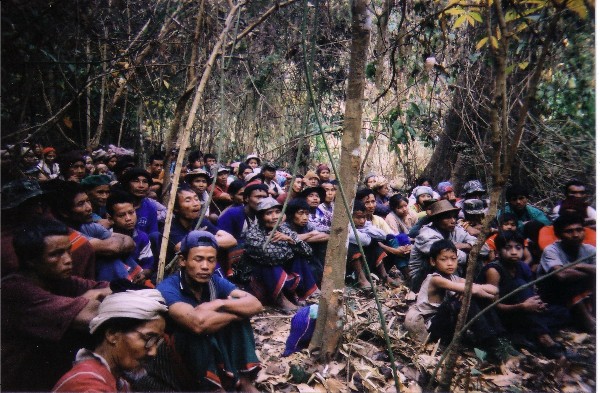
IDPs in a hiding place in Muthraw District
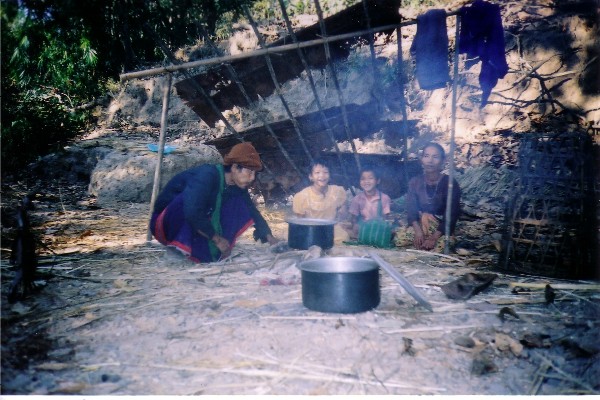
IDP shelter
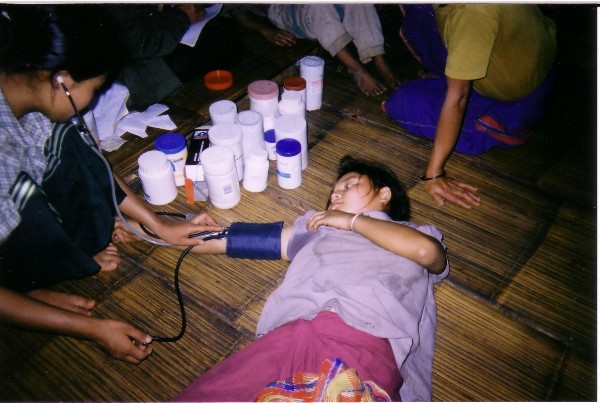
Relief team treating an IDP woman
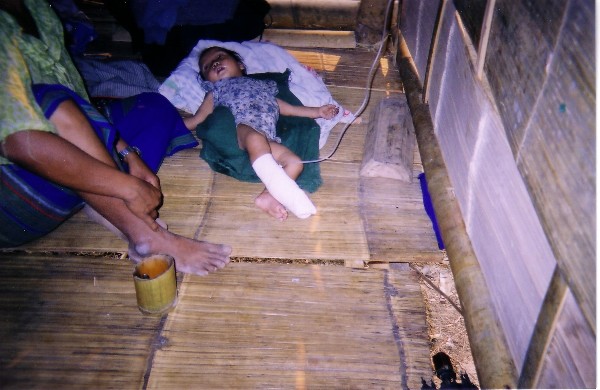
Relief team treating an IDP child
A Muthraw FBR team visited 11 IDP villages in the Northern part of Lu Thaw Township, Muthraw District, Karen State, in March 2004. Human rights violations are often committed in these areas and the relief team went to bring medical care, share public health information, encourage the IDPs and discuss their needs. The relief team treated 1,239 IDPs on this trip. In these areas, villagers suffer from the Burma Army and Karenni National Solidarity Organization (KNSO) combined troop activities. The KNSO is a group of Karenni who have joined the dictator's forces and attack Karenni people as well as Karen people along the Karen-Karenni border. Many villagers have fled deep into the jungle and have experienced health problems, especially pregnant women, women in general, and children. The FBR team gave them medical treatment, helped them with material supplies, and encouraged them as much as they could in other ways. Human rights abuses were committed by the Burma Army and KNSO troops. As a result of their actions, 26 schools have closed. On January 1, 2004, combined Burma Army and KNSO troops burned down Noo Tha Hta church, which has yet to be rebuilt as of the writing of this report. Burma Army and KNSO troops conducted joint attacks against Karen and Karenni villagers living along the Karen-Karenni border from January 11-February 13, 2004. Their primary purpose was to destroy the villager's food supplies and thus deny the Karen and Karenni resistance access to support. The combined troops captured Saw Klo Po, male, age unknown and killed him during their activities. SPDC troops who were involved in these activities in January 2004 included battalions from Division 55 MOC- LIB 553, 512, and IB 18. The three battalions were divided into two groups of troops, with one group headquartered at Mo-Kee and the other at Pa-Saung. They launched coordinated attacks from these two sites in the Karenni State. The offensive was focused on the southern part of Karenni State and into Northern Karen State (Muthraw and Toungoo Districts). Because the attacks continued into the Karen State, over 3,000 Karen were forced to stop their rice harvest and flee their homes.
When the relief team arrived in this area they realized that the IDPs were pleased to have a Karen FBR team visit and believe that the Karen National Union (KNU) and FBR work hard for them. They welcomed the team graciously and expressed that they want to join hands in the struggle for freedom. The relief team thanked their leaders who have organized the youth of Burma to serve the victims of the Burma Army. The team said that the people inside realize the Burma Army is working on development only to maintain power and tyranny over the people of Burma. The relief team asked for guidance and empowerment from their leaders and said the team would like to continue to serve their people on relief missions.
Relief Mission, Paan District, Karen State, Burma
February 9-March 23, 2004
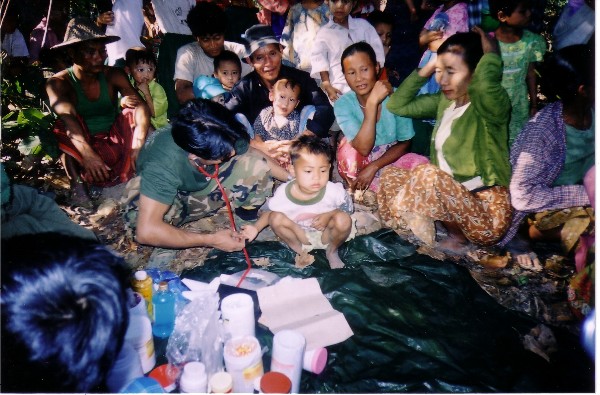
Medical treatment of Paan IDPs
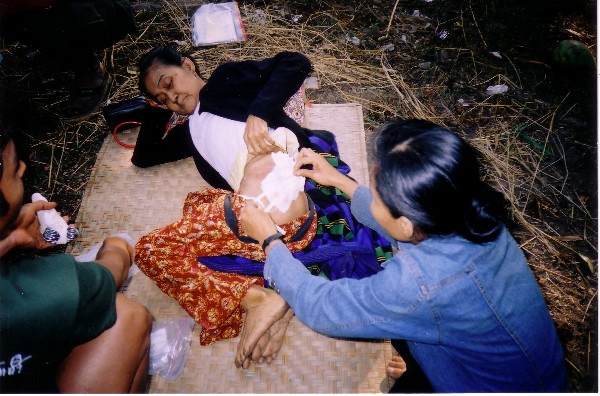
Paan FBR team treats an IDP woman
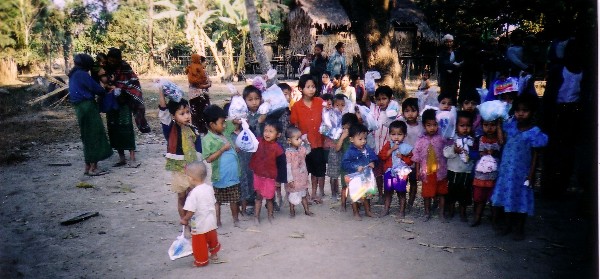
IDP Children receive Good Life Club packs from FBR team
The Paan FBR team went on a relief and human rights documentation trip to Paing Kyone and Hlaing Bwe townships in Paan District, Karen State. The two townships are located west of Tha Song Yang District, Tak Province, Thailand. The team interviewed 112 people in this area, with most reporting forced portering and looting by the Burma Army or DKBA. The team treated 706 patients during this relief mission.
The villagers in this area have consistently suffered the abuses of forced portering and looting of their possessions. They are weakened and struggling to survive. The FBR relief team recommends regular trips to these places to monitor the health situation and to give the villagers moral support. The villagers have insufficient medical care, do not have high standards of personal health and hygiene, and have not had the opportunity to attend school in most cases. The IDP situation in this area depends largely upon the Burma Army activities. During this relief mission, the Burma Army was quiet because of the ongoing cease-fire negotiations between the State Peace and Development Council (SPDC) and the Karen National Union (KNU).
The people in the IDP hiding places can continue to survive, barely, by farming the hills around their hiding sites. The villagers are forced to endure the Democratic Karen Buddhist Army (DKBA) stealing, looting, and eating of their food with no permission. The IDPs do not have enough medical care. They suffer a lot from diarrhea and stomach troubles at the beginning of every rainy season.
The areas the team reached are under the control of the Burma Army Major Win Tint, who is commander of No. 2 Column, LIB 101, 77th Division. This unit did not make any military actions during this time, but used the DKBA to patrol the area. There are three DKBA units in this area: DKBA 999 with it's headquarters at Kwan Bee, led by May Koe Baw; DKBA 555 headquartered at Myaing Gyi Ngu, led by Pa Min Tha; and DKBA 555 units which are attached to Burma Army camps called Waing Htaw and Mae Taw Day. During this trip the team observed that the SPDC and DKBA continue to force the people in this area to porter, and they threaten them and loot their property.
The villagers had to repair fences, dig trenches, and cut bamboo and wood poles for Major Win Tint. They were also sent to gather leaves for roofing in the Burma Army camps. The DKBA (999) based at Kwan Bee and DKBA (555) based in Myaing Gyi Ngu frequently eat the chickens and other animals owned by villagers without permission. In Htee Ta Blu Hta village there is a DKBA (555) sawmill which is owned by officer Daw Boe. All of the bullock carts belonging to villagers in the area are used to carry logs to this mill from the forest and the owners of the carts are not paid anything for their labor or the use of their carts.
The ceasefire talks have brought a stop to shooting but forced labor, human rights violations and the strengthening of Burma Army positions and the DKBA continues. The Paan FBR relief team thank God for their safe journey, thank the leaders in their area for their assistance, and thank FBR leaders for showing love and encouragement to the poor people in this area. The IDPs are shown that they are valued and that they are not alone.
